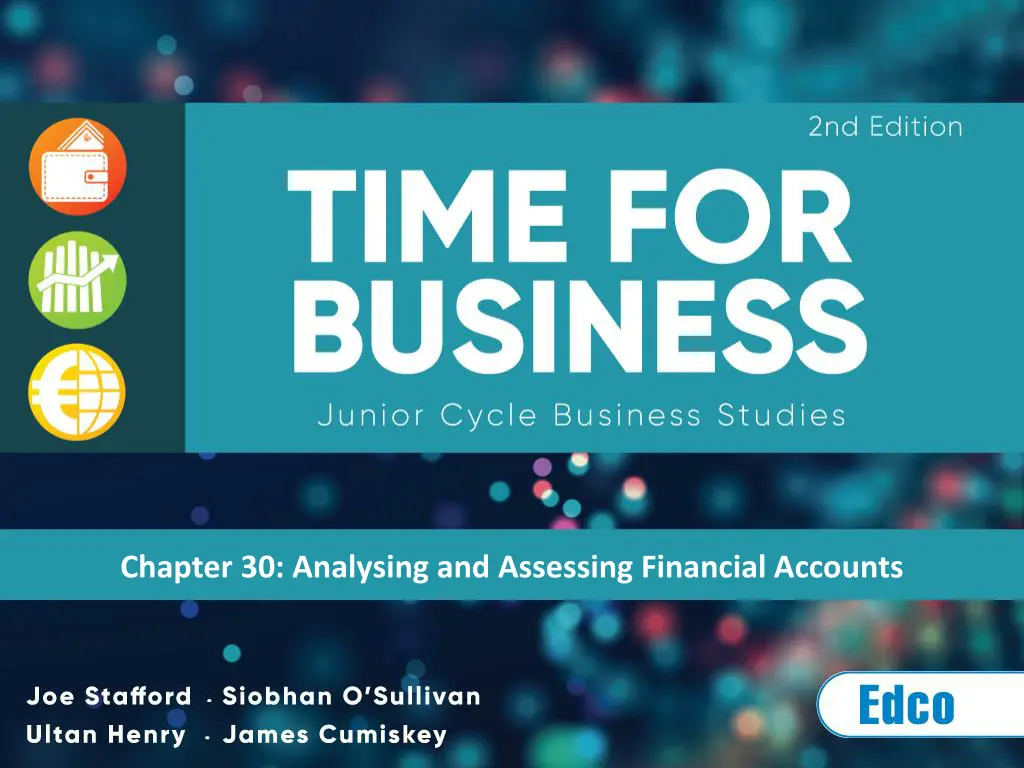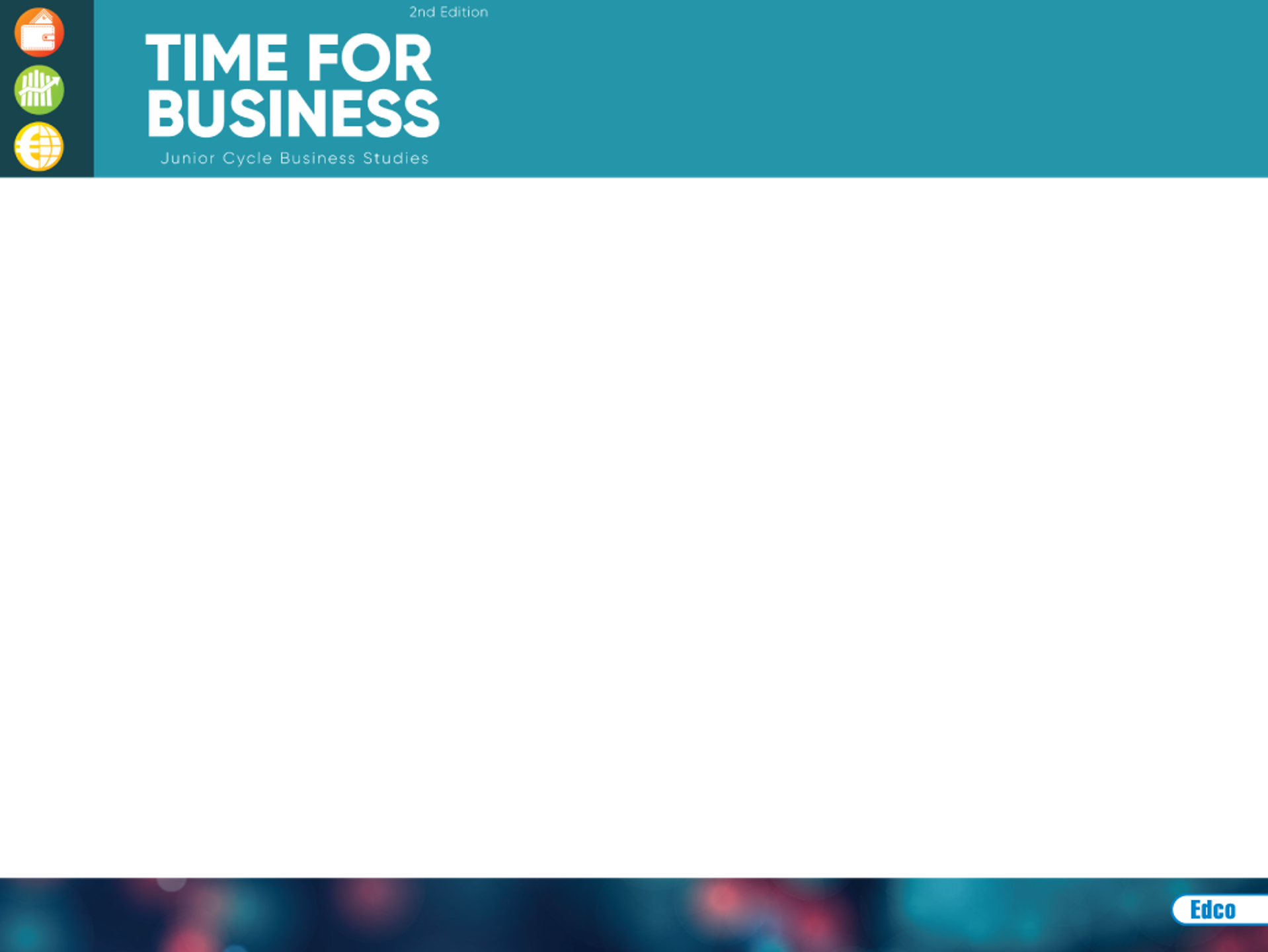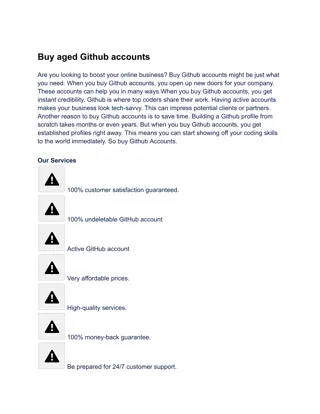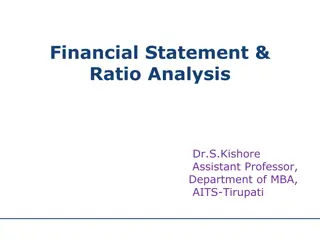Financial Accounts Analysis & Recommendations
Learn to analyze financial position, prepare reports, recommend actions for stakeholders. Explore ratio analysis & stakeholders' interests. Popular
Download Presentation

Please find below an Image/Link to download the presentation.
The content on the website is provided AS IS for your information and personal use only. It may not be sold, licensed, or shared on other websites without obtaining consent from the author.If you encounter any issues during the download, it is possible that the publisher has removed the file from their server.
You are allowed to download the files provided on this website for personal or commercial use, subject to the condition that they are used lawfully. All files are the property of their respective owners.
The content on the website is provided AS IS for your information and personal use only. It may not be sold, licensed, or shared on other websites without obtaining consent from the author.
E N D
Presentation Transcript
Chapter 30 Learning intentions In this chapter you will learn to: List the stakeholders who use the financial information provided by organisations Outline the key financial concerns of each of these stakeholders Analyse and evaluate the financial position of an organisation Prepare a report to communicate financial information to stakeholders Use your analysis to recommend a course of action. Textbook page reference: 348
Chapter 30 Analysing an organisation s financial position When we analyse the financial position of an organisation, we look at the evidence available in order to understand how well the organisation is meeting its financial goals. Textbook page reference: 349
Chapter 30 Ratio analysis One possible approach that can be used to help with this investigation is ratio analysis. Textbook page reference: 349
Chapter 30 Ratio analysis There are three main categories of financial ratio: 1. Profitability ratios analyse the profit made during the financial year. 2. Liquidity ratios look at cash flow in the organisation and measure its ability to pay short-term debts on time. 3. The Gearing ratio looks at how the organisation is financed and considers how much of its capital comes from external sources. External debt must be repaid with interest. Textbook page reference: 349
Chapter 30 Users of financial information Stakeholders is a collective term used to describe everyone who is involved in or affected by the activities of an organisation. Textbook page reference: 349
Chapter 30 Employees and managers Employees and managers may be interested in all financial aspects of the organisation because their long-term job security may depend on the organisation remaining profitable. Textbook page reference: 350
Chapter 30 Shareholders As the owners of a business, shareholders will mainly be concerned with profitability and the payment of dividends. Textbook page reference: 350
Chapter 30 Shareholders A dividend is the share of profits paid to shareholders. It is a reward for their investment in the organisation. Textbook page reference: 350
Chapter 30 Lenders All existing and potential lenders will be concerned with liquidity, as this measures the organisation s ability to pay its debts. Textbook page reference: 350
Chapter 30 Suppliers Liquidity will be the main concern for suppliers, especially those who supply goods on credit. An organisation that is having cash flow problems may struggle to pay its bills on time, which increases the likelihood of bad debts for suppliers. Textbook page reference: 350
Chapter 30 Government The government collects tax on company profits (corporation tax) and will therefore be interested in profitability levels. Textbook page reference: 350
Chapter 30 Calculating profitability Gross Margin Profitability can be measured by the gross profit percentage, which is also known as the gross margin. Textbook page reference: 352
Chapter 30 Profitability ratios net margin Profitability can be measured by the net profit percentage, which is also known as the net margin. Textbook page reference: 353
Chapter 30 Profitability ratios return on capital employed Profitability can be measured by the return on capital employed (ROCE), which is also known as the return on investment (ROI). Textbook page reference: 355
Chapter 30 Liquidity ratios working capital ratio (current ratio) This ratio is really asking the question: Does the business have enough short-term assets (to generate the cash) it needs to pay its short-term debts? Textbook page reference: 356
Chapter 30 Liquidity ratios acid test ratio (quick ratio) This ratio is a stricter test of liquidity than the working capital ratio. It accounts for the fact that some current assets, especially stock, can take time to convert to cash. Textbook page reference: 357
Chapter 30 Gearing ratio Gearing focuses on the capital structure of the organisation. It compares the amount of finance provided by debt capital to the amount of finance provided by equity capital. Textbook page reference: 359
Chapter 30 Gearing Debt capital is money borrowed from an external source and it must be repaid with interest. It includes all long-term loans. Textbook page reference: 359
Chapter 30 Gearing Equity capital is money received by selling shares. Equity capital is a cheap source of finance and does not have to be repaid. Equity capital includes issued share capital and reserves. Textbook page reference: 359
Chapter 30 Gearing If equity capital > debt capital, the organisation is lowly geared. Low gearing is less risky since the organisation has less borrowing and is under less pressure to repay interest and debts. Textbook page reference: 359
Chapter 30 Gearing If debt capital > equity, the organisation is highly geared. High gearing has a greater level of risk because the organisation has more debt, which must be repaid with interest. During periods of slow growth, it may struggle to earn the levels of income required to meet these repayments. Textbook page reference: 359
Chapter 30 Report writing A report is a written document used to communicate information from which conclusions and recommendations can be drawn. A financial report helps explain the financial position of an organisation. Textbook page reference: 361
Chapter 30 Recap and review Can you? List the stakeholders who use the financial information provided by organisations Outline the key financial concerns of each of these stakeholders Analyse and evaluate the financial position of an organisation Prepare a report to communicate financial information to stakeholders Use your analysis to recommend a course of action.
Chapter 30 Credit slide Shutterstock

























